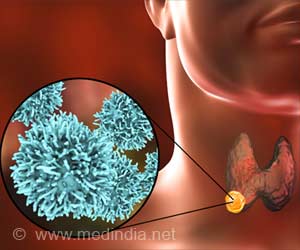
The nursing profession has long faced a crisis of burnout and staffing shortages, intensified by the demands of the COVID-19 pandemic. As a significant portion of Missouri’s nurses approach retirement, addressing this issue is critical to preventing a looming workforce crisis. A recent study presents a surprising yet effective intervention: offering nurses massages during their shifts. (1✔ ✔Trusted Source
Massage therapy for hospital-based nurses: A proof-of-concept study
)
The findings revealed that this simple approach not only alleviates physical discomfort but also promotes mental rejuvenation, enabling nurses to return to their duties with renewed energy. These results can guide leaders in healthcare and other high-burnout industries to explore the potential benefits of massage therapy or similar interventions in improving employee well-being and reducing staff turnover.
Jennifer Hulett has been a nurse for 30 years and is now a researcher at Mizzou’s Sinclair School of Nursing. She knows firsthand how 12-hour shifts lead to physical aches and pains, chronic stress and a high rate of burnout.
With so many nurses leaving the profession for less stressful careers, the extremely high rate of burnout has caused a constantly revolving door of staffing shortages throughout the nursing industry, with the average new nurse becoming burned out within 18 months on the job.
Researchers Advocate for Nurses’ Well-being
“I have seen over the years the physical and mental toll the job puts on nurses, and many nurses are not healthy as a result,” Hulett said. “It is unfortunate because nurses dedicate their careers to taking care of their patients, but no one is taking care of the nurses. I’m determined to change the culture of the nursing industry in a way that improves well-being through mind-body interventions.”
In the recently published study, nurses were surveyed on their physical symptoms related to aches and pains as well as their mental well-being before and after receiving 15-minute massages twice per week during their work shift for a month.
“After just one month of the intervention, the nurses reported fewer aches and pains after receiving the massages,” Hulett said. “Perhaps the most important finding was the nurses often reported feeling rejuvenated to go back to work after the massages, improving their overall mental well-being.”
Advertisement
Hulett’s main objective is to create a healthier work environment where nurses are excited to go to work and want to remain in the profession long-term. Massages could be just one intervention among a toolbox of options nurses could potentially choose from. She added that more research is needed to further explore other types of interventions to see which ones might be most effective in improving employee well-being.
“It is time to start thinking outside the box because if we do nothing, current staffing shortages will continue to get worse,” Hulett said. “We have seen over the years that it becomes a vicious cycle where you are constantly hiring new nurses without enough experienced nurses to mentor and train the new hires. This ultimately impacts the quality of care that gets delivered to patients, and that is another critical topic future research can explore.”
Advertisement
While this particular study focused on burnout in the nursing industry, Hulett added that other healthcare professionals and professions that experience high rates of staffing shortages because of burnout could benefit from this type of intervention.
Reference:
- Massage therapy for hospital-based nurses: A proof-of-concept study – (https://www.sciencedirect.com/science/article/abs/pii/S1744388124000197?via%3Dihub)
Source-Eurekalert



